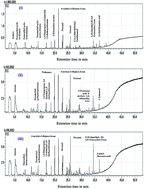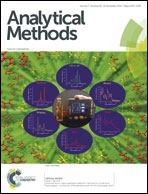Human body odor discrimination by GC-MS spectra data mining
Abstract
The present study explores individual identity perception by analyzing the chemical peak information in the gas chromatography-mass spectrometry (GC-MS) spectra of body odor samples with standard data mining approaches. Mainly, the principal component analysis (PCA) method is chosen for the visual discrimination of the body odor samples in feature space. PCA in combination with the support vector machine (SVM) method is used for quantitative recognition. GC-MS characterization confirms the composition of numerous chemical species (aldehydes, acids, ketones, esters, sulfides etc.) in the body odor samples. The GC-MS spectra of body odor samples from the armpit and neck of three people (from dissimilar age groups) at two different sampling times (0 h and 4 h) were recorded in the experiment. A few blank (non-body odor) samples were also characterized with GC-MS and included as references in further analysis by the data mining methods. The discrimination efficiency (both qualitative and quantitative) for the individual body odors was evaluated for (i) three variables of chemical information in the GC-MS spectra (the peak area, peak height and ratio of peak area to height); (ii) two sampling times (0 h and 4 h); and (iii) two sampling parts of the body (the neck and armpit). The best visual discrimination of the individual body odors has been achieved using the peak height as a variable for the neck odor with a sampling time of 4 h. This result has been established with class separability measures calculated with principal component (PC) scores and SVM classification outcomes (86%).


 Please wait while we load your content...
Please wait while we load your content...